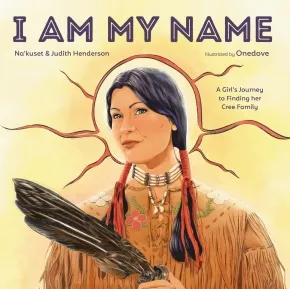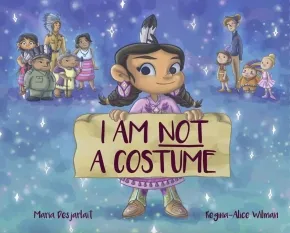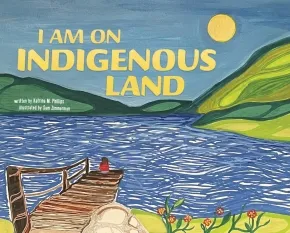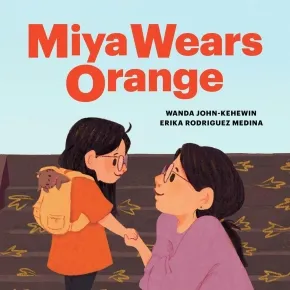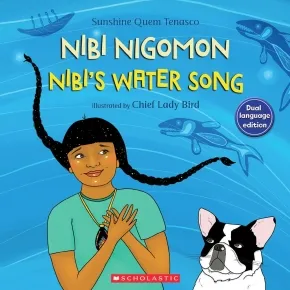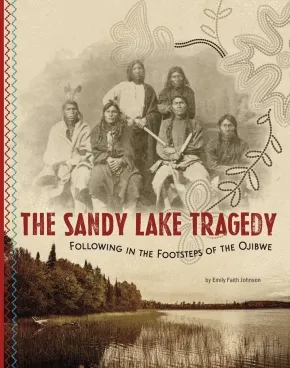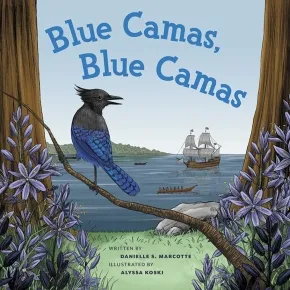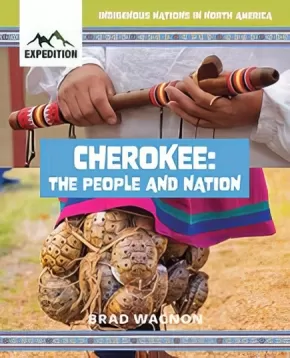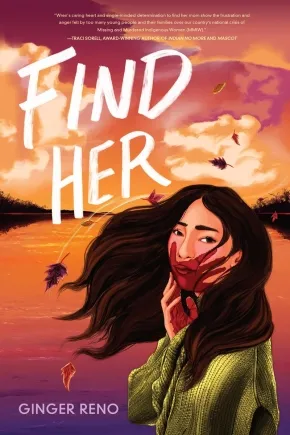
Indigenous Awareness
1
-
15
of
114 Results;
Sort By
Go To
of 8
Anishinaabek: The People and Nations
$16.95
Format:
Paperback
Text Content Territories:
Indigenous Canadian; First Nations; Anishinaabeg;
ISBN / Barcode: 9781774565100
Synopsis:
Synopsis:
The Anishinaabek are a rich nation with teachings and practices passed down from generation to generation. Explore more about the people and nations through Anishinaabek author Jennifer Meness.
Educator & Series Information
This book is part of the Indigenous Nations in North America series.
Additional Information
32 Pages | Paperback
Celebrating Potlatches
$21.95
Artists:
Format:
Hardcover
Text Content Territories:
Indigenous Canadian; First Nations; Tsimshian (Ts'msyen); Nisga'a;
ISBN / Barcode: 9781771746564
Synopsis:
Synopsis:
“Papa, what is a Potlatch?”
Inspired by Ts’msyen Chief William Beynon’s historic notebooks on Potlatches in the Gitxsan village of Gitsegukla, Celebrating Potlatches pairs intergenerational storytelling with beautiful illustrations to honour Indigenous traditions. From the award-winning author of Oolichan Moon and the accomplished illustrator of Be a Good Ancestor, this book recounts the 1885 Potlatch ban and the resilience of the communities who fought to keep their traditions alive.
Reviews
“Heartfelt and timely, Celebrating Potlatches gifts readers with cultural teachings through an intergenerational account of Indigenous resilience. This book is a beautiful tribute to the author’s great-grandfather, William Beynon, whose life’s work documenting oral histories of Sm’algya̱x-speaking Peoples and their Potlatches continues to be foundational to our cultural resurgence today.” – Sm Łoodm ‘Nüüsm (Dr. Mique’l Dangeli), Sm’algya̱x language expert and Assistant Professor of Indigenous Arts at the University of Victoria
“This beautiful book shares the importance of community, culture, and identity. As you make your way through the pictures and words, they bring you to an understanding of how important the Potlatch ceremony was and continues to be for Indigenous Peoples.” – Carolyn Roberts, educator, speaker, and author of Re-Storying Education
Educator Information
Recommended for ages 4 to 8.
Through this conversational historic account, readers can learn alongside the narrator as his Papa shares his wisdom about the rich history of the Potlatch.
Curriculum Connections
- Early literacy – listening, reading, and discussing
- Art – traditional Indigenous art, drumming, and regalia
- Social studies – the 1885 Potlatch ban, history of Indigenous Peoples, connection to community
- Social responsibility – uplifting ourselves and others, honouring traditions
- Indigenous knowledge and traditions – traditional teachings, Potlatch ceremonies, intergenerational storytelling
Two free, downloadable lesson plans—one for kindergarten to Grade 1 and one for Grades 2 to 3—provide connections to Social Studies curriculum.
Additional Information
32 Pages | 10" x 8.5" | Hardcover
I Am a Sixties Scoop Warrior
$17.95
Format:
Paperback
Text Content Territories:
Indigenous Canadian; Métis;
ISBN / Barcode: 9781774569153
Synopsis:
Synopsis:
The Sixties Scoop is a dark part of Canada's history. Learn more about this time from someone who lived it. Jacqueline tells us more about her time as a child in the Sixties Scoop.
Educator Information
Juvenile Nonfiction
Additional Information
24 pages | Paperback
I Am My Name: A Girl's Journey to Finding Her Cree Family
$26.99
Artists:
Text Content Territories:
Indigenous Canadian; First Nations; Cree (Nehiyawak);
ISBN / Barcode: 9780593648766
Synopsis:
Synopsis:
An evocative autobiographical picture book about Cree activist Na'kuset's life as a young girl taken from her home along with thousands of other indigenous children during the 1960s, and the journey of discovery that leads her to reclaim her life and culture.
I have come from somewhere else, where
I am Cree and I have a big sister
and another name.
One night, a very young girl was removed from her home during Canada’s Sixties Scoop, which tore children from their Indigenous communities. She woke in a new home, with a new family and a new name—her former life fading to a ghost of a memory. The only place she ever felt like she fit in was with her grandmother—her Bubbie—who listened to her and made her chicken soup and wrapped her in her loving arms. Until one day…the girl discovered the truth. And her beloved Bubbie helped her on her journey to claim her identity, her voice—and her name.
Together, Na'kuset and Judith Henderson tell the powerful story of the Indigenous experience for a child during the Sixities Scoop. Cree illustrator Onedove shared how inspired they are by Na'kuset's story and activism, and that is made evident in the tender and vivid illustrations that bring Na'kuset's story to life.
Educator Information
Recommendations for ages 6 to 9.
Lexile measure: 450L
Fountas & Pinnell Text Level Gradient: O
Additional Information
40 pages | 9.50" x 9.50" | Hardcover
I Am Not a Costume
$22.99
Artists:
Format:
Hardcover
Text Content Territories:
Indigenous American; Native American; Anishinaabeg; Ojibwe (Chippewa);
ISBN / Barcode: 9781778540738
Synopsis:
Synopsis:
I am not a costume.
Ayasha’s school is having a costume party and she is so excited!
But when Ayasha arrives at school and sees other students wearing fake regalia, she is confused and upset. She doesn’t understand why they think her culture is a costume. Ayasha turns to her family and together they come up with a way to teach her classmates about her culture and how to honor her people respectfully.
Educator Information
Recommended for ages 6+.
Additional Information
32 pages | 8.50" x 11.00" | Hardcover
I Am on Indigenous Land
$25.99
Format:
Hardcover
Text Content Territories:
Indigenous American; Native American; Shawnee; Seminole; Salish; Coast Salish; Nisqually; Navajo (Diné); Ho-Chunk (Winnebago); Haudenosaunee (Iroquois); Tuscarora; Chickasaw; Blackfoot Confederacy (Siksikaitsitapi); Anishinaabeg; Ojibwe (Chippewa); Indigenous Caribbean; Taino;
ISBN / Barcode: 9781684363087
Synopsis:
Synopsis:
With simple, lyrical text and vibrant panoramic illustrations, this picture book explores the beauty and resources of thirteen ancestral Indigenous lands and how we all use those lands each day. Simple poetry and portrayals of children and families enjoying rivers, bike paths, beaches, and parks show how everyday activities can include honoring Indigenous nations and cultures.
Author Katrina Phillips (Ojibwe citizen) and illustrator Sam Zimmerman (Ojibwe direct descendant) together have crafted a loving tribute that gently demonstrates recognition and acknowledgement of the nations of people who first called these lands home.
Educator Information
Recommended for ages 3 to 9.
Additional Information
32 pages | 10.00" x 8.00" | Hardcover
Miya Wears Orange
$21.95
Artists:
Format:
Hardcover
Text Content Territories:
Indigenous Canadian; First Nations; Cree (Nehiyawak);
ISBN / Barcode: 9781774921258
Synopsis:
Synopsis:
A beautifully illustrated book that gently explores the complicated feelings a young girl experiences as she learns about tragedy and injustice.
Miya loves her school and she especially loves storytime. One day, her teacher shares a story about a little girl who was taken away to a residential school. The little girl wasn’t allowed to go home. Her hair was cut and she wasn’t allowed to keep her favourite doll. She was taken away from her family because she was Indigenous, just like Miya!
Miya worries the same thing will happen to her. Her mom tells her that Indigenous girls and boys aren’t forced to leave their families anymore. Miya is relieved, but she is still sad. What can she do about these feelings?
Reviews
"A moving and important story that deftly explores the fear a little Indigenous girl feels when she learns the truth about residential schools. Miya finds solace in her mom’s words, and readers will too. A sensitive explanation of residential schools that prioritizes the emotional safety of all readers, especially Indigenous children."— Jen Moss, lecturer at UBC's School of Creative Writing
"opens the door to an important discussion about residential schools" - School Library Journal
Educator Information
Recommended for ages 6 to 8.
In this story, a young girl named Miya feels scared and sad after learning about residential schools, but she learns how to cope with the help of her mother.
A gentle story about big feelings and finding courage.
Big Ideas: Social-Emotional Learning: Emotions and Feelings; Social Justice: Intergenerational Trauma, Residential Schools.
This book is available in French: Le Chandail orange de Miya.
Additional Information
40 pages | 8.50" x 8.50" | Hardcover
Nibi nigomon/Nibi's Water Song
$8.99
Format:
Paperback
Text Content Territories:
Indigenous Canadian; First Nations; Anishinaabeg;
ISBN / Barcode: 9781039700673
Synopsis:
Synopsis:
Nibi is determined to bring clean water to her community.
Nibi is the Anishinabemowin word for water. In Nibi’s Water Song, Nibi is an Indigenous girl on the search for clean water to drink. Though she is faced with repeated obstacles, Nibi’s joyful and determined energy becomes a catalyst for change and action as her community rallies around her to make clean drinking water available for all.
First published in 2020, Nibi’s Water Song was shortlisted for both the IODE Jean Throop Award and longlisted for the First Nations Communities READ Award. This dual-language edition presents the text in both English and Anishinabemowin.
Educator Information
Recommended for ages 4-8.
Dual-language: English and Anishinabemowin
Translated by Tina Nottaway. Tina is an Algonquin Anicinabe Ikwe artist and translator from Rapid Lake, Quebec. She is fluent in her language, Anicinabemowin. Tina is also a crafter and facilitates workshops on moccasin making, birchbark basket making and other cultural activities.
This resource is available in English: Nibi's Water Song
This resource is also available in French: Nibi a soif, très soif
Additional Information
32 pages | 9.51" x 9.51" | Paperback
The Sandy Lake Tragedy: Following in the Footsteps of the Ojibwe
$13.99
Format:
Paperback
Text Content Territories:
Indigenous American; Native American; Anishinaabeg; Ojibwe (Chippewa);
ISBN / Barcode: 9798875206146
Synopsis:
Synopsis:
In 1850, 5,000 Ojibwe people were forced to make a dangerous journey across the Midwest to get treaty payments owed to them from the U. S. Government. But the payments never came, and the Ojibwe had to travel back home through treacherous winter conditions and without the money or supplies they had been promised. More than 400 Ojibwe lost their lives in this event that is now known as the Ojibwe Trail of Tears. Compelling narrative and impactful images help to recount the injustices of this forced removal and explain how it happened, what the many consequences were, how the Ojibwe people responded, and why this tragedy is still vitally relevant today. Author Emily Faith Johnson (Sault St. Marie Chippewa member) shares this not-to-be-forgotten story with young readers and educators seeking a closer look at U.S. history.
Educator Information
Recommended for ages 8 to 12.
Additional Information
32 pages | 8.00" x 10.00" | Paperback
Blue Camas, Blue Camas (PB)
$14.95
Format:
Paperback
Text Content Territories:
Indigenous Canadian; First Nations; Salish; Coast Salish; Songhees (Lekwungen);
ISBN / Barcode: 9781772035247
Synopsis:
Synopsis:
The captivating story of how the Blue Camas, a flower that has been cultivated on Canada’s west coast since time immemorial, came to symbolize the meeting of two contrasting ways of life and the perseverance of traditional knowledge against all odds.
Blue Camas, Blue Camas tells the story of a flower that is native to the Northwest Coast of North America. For thousands of years, it has been considered a sacred and valuable plant by the Indigenous Peoples of this region, who harvested and traded Blue Camas bulbs all along the west coast. At the height of this period, meadows would come alive with the bright wildflowers, which would attract dozens of species of butterflies and birds, and entire villages would work together to harvest the plant and ensure its continued growth.
When Europeans arrived and began to colonize the land, they did not see the value of the Blue Camas plant, and in fact saw the meadows where the plant had been harvested as ideal terrain to grow their own crops. The story takes place at the point of contact between a Lkwungen community and a group of Irish settlers, who see the land in very different ways.
This beautifully illustrated picture book is an ode to a way of life that was threatened and nearly destroyed through miscommunication and colonization. It also raises awareness for food rights, biodiversity, and the preservation of ecosystems, offering children and teachers the opportunity to discuss these important themes in an open and constructive way.
Reviews
"Blue Camas, Blue Camas is a captivating story revealing the overlooked history of colonial contact and its impact on Indigenous communities. Through vivid storytelling and diverse voices, it emphasizes land stewardship, cultural heritage, and fostering empathy, making it a valuable resource for children.”—Samantha Beynon, author of Oolichan Moon
“A beautiful story and an important narrative about the timeline of colonial contact . . . I am happy to share this book with my children.”—Sen’ákw, Senaqwila Wyss, Squamish Nation ethnobotanist
“Danielle S. Marcotte offers a rich, historical perspective of the amazing Blue Camas plant through the eyes of a First Nations family and a settler family.”—Teoni Spathelfer, Heiltsuk author of the Little Wolf Series
“This beautiful story weaves together a rich and important narrative. Family, nature, and the village are all intertwined, with the camas at the centre of it all. So simple and yet so poignant and true!”—Robert "Lucky" Budd, co-author (with Roy Henry Vickers) of the Northwest Coast Legends Series and A Is for Anemone: A First West Coast Alphabet
Educator Information
Recommended for ages 4 to 8.
Additional Information
48 pages | 9.00" x 9.00" | Paperback
Cherokee: The People and Nation
$16.95
Format:
Paperback
Text Content Territories:
Indigenous American; Native American; Cherokee;
ISBN / Barcode: 9781774565117
Synopsis:
Synopsis:
In this book, discover the difficult journey of The Cherokee people. How they came to North America and how they were then removed with other Nations through The Trail of Tears. Learn about the seven Cherokee clans. Their culture, traditions, and language as it was the first Indigenous language put into writing.
Educator & Series Information
This book is part of the Indigenous Nations in North America series.
Additional Information
32 Pages | Paperback
Discovering and Understanding The Métis
$24.99
Format:
Hardcover
Text Content Territories:
Indigenous Canadian; Métis;
ISBN / Barcode: 9782898244766
Synopsis:
Synopsis:
From their origins to their lives today, the Métis have so many things to tell us! Thanks to beautiful photos, illustrations, and texts written by experts, we can learn and understand more about the rich culture of the Métis.
Educator & Series Information
Recommended for ages 7 to 12.
This book is part of the Discovering and Understanding series.
Additional Information
32 pages | 8.66" x 10.62" | Hardcover
Find Her
$24.49
Format:
Hardcover
Text Content Territories:
Indigenous American; Native American; Cherokee;
ISBN / Barcode: 9780823454808
Synopsis:
Synopsis:
Five years, three months, and twelve days.
That’s how long Wren’s mother has been missing.
In dreams, Wren can see her again: her eyes, her hair, her smile. She can even hear her laugh. Her mother, one of hundreds of Native Americans considered missing or murdered in Oklahoma. Sometimes it seems like Wren and her grandmother are the only people still looking. Even more frustrating, Wren's overprotective father won't talk about it.
Wren refuses to give up, though. And an opportunity to find lost pets seems like a real way to hone her detective skills. But everything changes when one of the missing pets is found badly hurt. Soon, there are others.
With help from an unlikely friend, Wren vows to unmask whoever is behind the animal abuse. If she can do this, maybe she can do the same for her mother's case. She'll just have to keep it secret from her father who will certainly put an end to all her sleuthing if he finds out.
Find Her explores the crisis of missing Indigenous women from the perspective of a sensitive young Cherokee girl who yearns to find her mother, while also navigating a chilling town mystery, a new friendship, and a family in need of healing.
Awards
- A Junior Library Guild Gold Standard Selection
Reviews
"Via crisp prose, Reno meshes plot threads involving abandoned shelter pets and a mystery surrounding a locator on Wren’s grandmother’s keys, which emphasize the futility Wren feels in trying to find someone who seems unreachable."—Publishers Weekly, Starred Review
"A dramatic and captivating call for attention."—Kirkus Reviews
"Cherokee writer Reno crafts a powerful debut centering an important issue affecting Indigenous women and families; a strong purchase for all middle schools."—School Library Journal
"Wren's caring heart and single-minded determination to find her mom shows the frustration and anger felt by too many young people and their families over our country's national crisis of Missing and Murdered Indigenous Women (MMIW)."—Traci Sorell, award-winning author of Indian No More and Mascot
"Find Her is a compelling novel written with sensitivity by gifted Cherokee writer Ginger Reno. In this contemporary story of Wren and her family in Cherokee Nation, Reno addresses the injustice of so many missing and murdered indigenous relatives and the heartbreak and hope that comes with not knowing. Find a place on your shelves for Find Her."—Andrea L. Rogers, award-winning author of Man Made Monsters
Educator Information
Recommended for ages 10+
Additional Information
|
Haudenosaunee: The People and Nations
$16.95
Format:
Paperback
Text Content Territories:
Indigenous Canadian; First Nations; Haudenosaunee (Iroquois);
ISBN / Barcode: 9781774565124
Synopsis:
Synopsis:
The Haudenosaunee, like many Indigenous Nations and communities across North America, have their own history and culture. Discover the Peacemaker Story, which explains how the Confederacy was created. Learn about historical facts and their effects on present times. Get to know Haudenosaunee people who give thanks everyday and have many stories and traditions to tell.
Educator & Series Information
This book is part of the Indigenous Nations in North America series.
Additional Information
32 Pages | Paperback
Métis: The People and Nation
$16.95
Format:
Paperback
Text Content Territories:
Indigenous Canadian; Métis;
ISBN / Barcode: 9781774565131
Synopsis:
Synopsis:
The Metis peoples have a rich and expansive history here in Canada and beyond. Learn more about their hertiage, teachings, traditions which have traveled generations and generations.
Educator & Series Information
This book is part of the Indigenous Nations in North America series.
Additional Information
32 Pages | Paperback
Sort By
Go To
of 8






